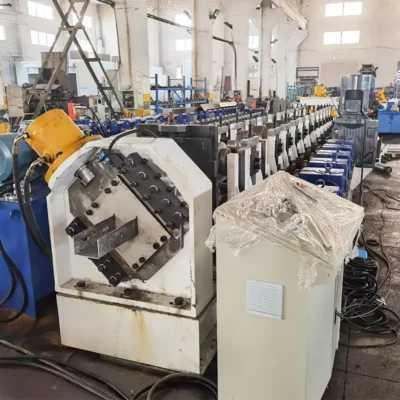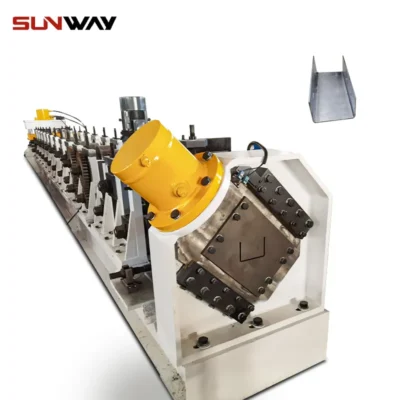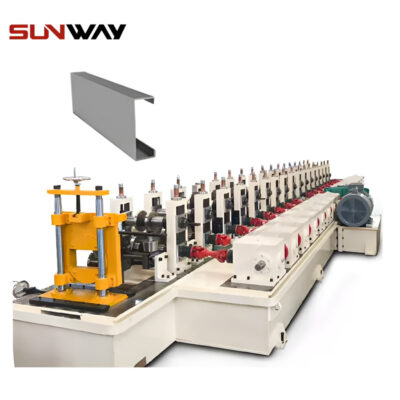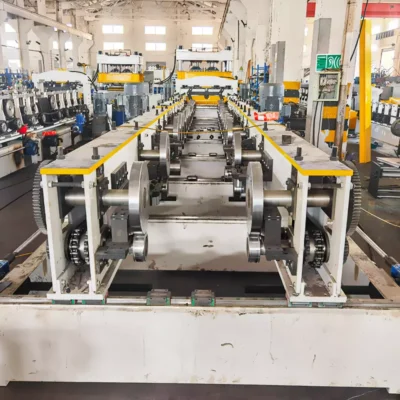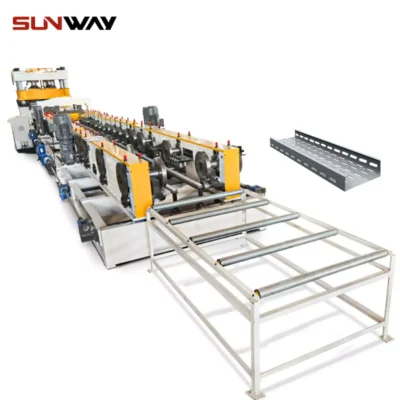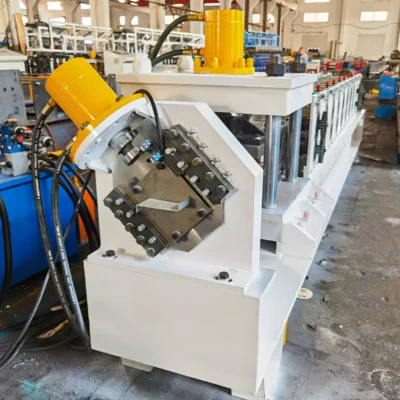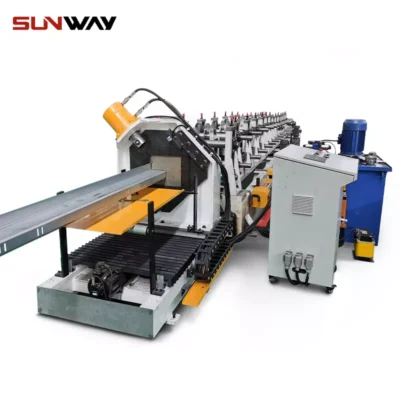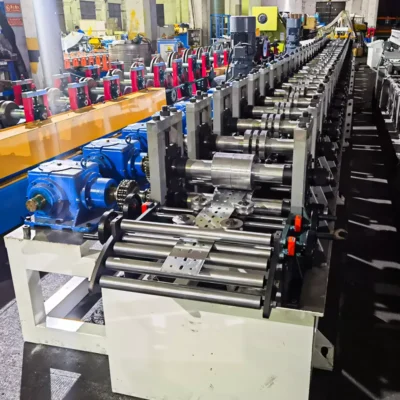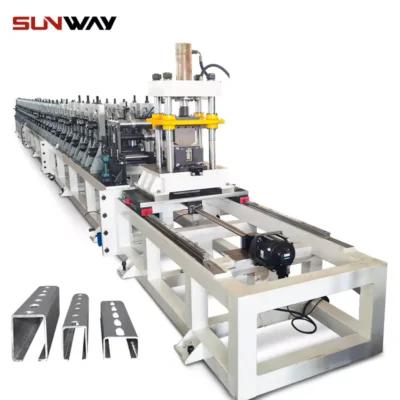Cinema seating has evolved significantly over the years, with modern theaters demanding durable, aesthetically pleasing, and ergonomic designs to enhance audience comfort and satisfaction. Behind the production of these high-quality seating systems lies a critical piece of technology: Cinema Seat Roll Forming Machines. These highly specialized machines are essential for manufacturing the metal frames and components that form the backbone of cinema seats.
In this article, we’ll dive into what cinema seat roll forming machines are, their applications, pricing structures, automation capabilities, advantages over traditional manufacturing methods, and why Wuxi Sunway Machinery is a key player in this industry. Whether you’re a theater designer, a seating manufacturer, or a supplier looking to expand, this comprehensive guide will shed light on this integral manufacturing technology.
What Are Cinema Seat Roll Forming Machines?
Cinema Seat Roll Forming Machines are advanced manufacturing systems designed to produce the metal components used in cinema seating. These machines use cold roll-forming technology to transform metal coils into precise, ergonomic profiles that are later assembled into cinema seat frames.
The design and construction of cinema seats require components that are both lightweight and strong enough to withstand frequent use over a long lifespan. Roll-forming machines ensure precision, efficiency, and consistent quality, making them indispensable for seating manufacturers.
Key Features
- Ergonomic Design Support: Produces profiles that align with human body contours for enhanced comfort.
- Material Versatility: Processes a wide range of metals, including cold-rolled steel, stainless steel, and aluminum.
- Precision Engineering: Ensures consistent quality and exact dimensions for seamless assembly.
- High-Speed Production: Meets the high-volume demands of theaters and entertainment venues.
- अनुकूलन: Supports unique designs to match the aesthetic and functional requirements of different cinema projects.
Applications of Cinema Seat Roll Forming Machines
Cinema seat roll-forming machines are at the core of manufacturing seating systems for theaters, entertainment venues, and other public spaces. Their versatility and efficiency allow for the production of various components that make up a complete seating system.
1. Seat and Backrest Frames
- Use Case: Producing the structural metal frames for seat cushions and backrests.
- Why It’s Essential: Ensures durability and stability while supporting ergonomic seat designs.
2. Armrest Frames
- Use Case: Shaping the metal profiles used in armrests, which often incorporate cup holders or storage spaces.
- Why It’s Beneficial: Provides strength while allowing for functional add-ons.
3. Leg and Base Components
- Use Case: Manufacturing the legs and bases that anchor cinema seats to the floor.
- Why It’s Critical: Ensures stability and safety for high-traffic seating areas.
4. Recliner Mechanisms
- Use Case: Producing components for reclining cinema seats, including pivot points and support frames.
- Why It’s Unique: Enhances the comfort and luxury of premium seating options.
5. Row Connectors and Mounting Rails
- Use Case: Crafting the metal rails and brackets that connect seat rows and secure them to the floor.
- Why It’s Necessary: Simplifies installation while maintaining alignment and spacing.
Key Features of Wuxi Sunway Cinema Seat Roll Forming Machines
Wuxi Sunway Machinery is a global leader in roll-forming technology, offering machines specifically designed to meet the needs of cinema seat manufacturers. Here’s why their solutions are trusted worldwide:
1. Material Processing Versatility
- Supported Materials:
- Cold-Rolled Steel
- गैल्वेनाइज्ड स्टील
- Stainless Steel
- एल्यूमीनियम
- Why It’s Beneficial: Ensures compatibility with a variety of materials to meet different seating requirements.
2. High-Precision Rollers
- What It Includes: Rollers engineered for producing intricate profiles with tight tolerances.
- Why It’s Critical: Guarantees consistent quality and alignment during seat assembly.
3. Integrated Cutting and Punching
- What It Offers: Built-in systems for precision cutting, punching, and notching during the roll-forming process.
- Why It’s Efficient: Reduces production time and ensures components are ready for immediate assembly.
4. Modular Tooling Design
- What It Enables: Quick changes between different profiles, such as seat frames, armrests, and base components.
- Why It’s Versatile: Supports multi-profile production without the need for multiple machines.
5. Ergonomic Profile Production
- What It Supports: Shapes profiles that follow ergonomic principles, ensuring maximum comfort for users.
- Why It’s Unique: Allows manufacturers to produce seats that meet modern comfort standards.
6. Energy Efficiency
- What It Delivers: Machines equipped with energy-efficient motors and optimized workflows.
- Why It’s Sustainable: Reduces operational costs and aligns with eco-friendly manufacturing practices.
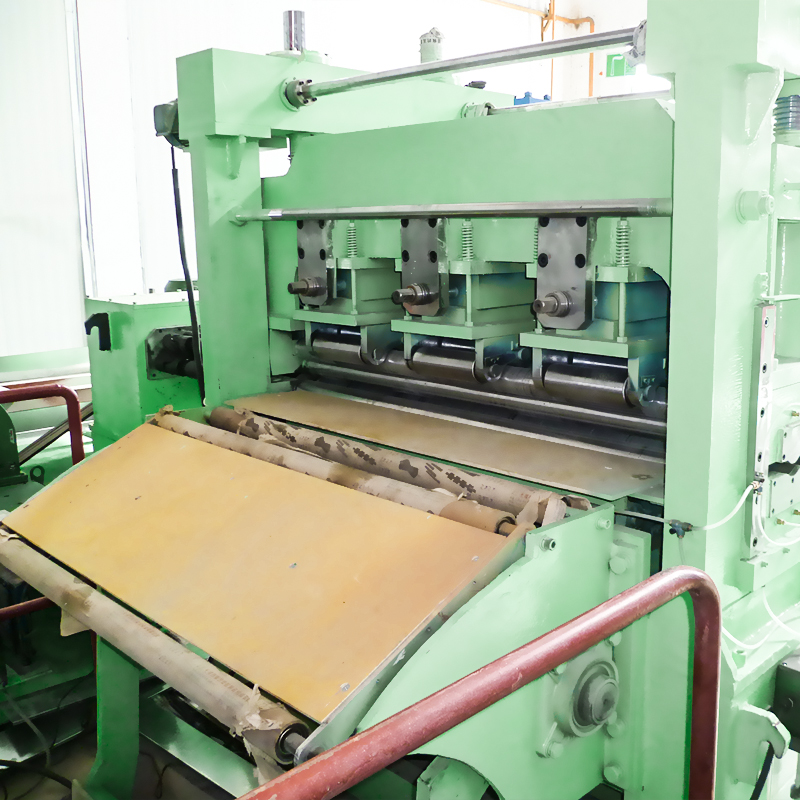
Pricing of Cinema Seat Roll Forming Machines
The cost of a Cinema Seat Roll Forming Machine depends on its features, production capacity, and customization options. Below is a general pricing guide for 2025:
| Machine Type | Capabilities | Price Range (USD) |
|---|---|---|
| Standard Machines | Basic seat and frame profiles | 150,000–150,000–150,000–400,000 |
| Advanced Machines | High-speed, multi-profile production capabilities | 400,000–400,000–400,000–800,000 |
| Customizable Machines | Tailored for ergonomic designs and premium seating | 800,000–800,000–800,000–1,500,000 |
For detailed pricing and financing options, contact Wuxi Sunway Machinery.
Advantages of Using Cinema Seat Roll Forming Machines
Cinema seating manufacturers face unique challenges, from meeting high-volume demands to adhering to ergonomic and aesthetic standards. Cinema Seat Roll Forming Machines offer several advantages:
1. Precision Engineering
- Why It’s Crucial: Ensures components meet exact specifications, reducing assembly issues and waste.
2. High-Speed Production
- Why It’s Beneficial: Meets tight project deadlines for theater installations and upgrades.
3. Customization
- Why It’s Essential: Allows manufacturers to create unique seating designs tailored to specific theaters or brands.
4. Cost-Effectiveness
- Why It’s Practical: Reduces labor costs and material waste, making high-quality seating more affordable.
5. Durability
- Why It’s Relevant: Produces components capable of withstanding heavy usage in high-traffic areas.
6. Eco-Friendly Manufacturing
- Why It’s Important: Minimizes waste and supports the use of recyclable materials, aligning with sustainability goals.
Automation in Cinema Seat Roll Forming Machines
Automation is transforming the manufacturing landscape, and Cinema Seat Roll Forming Machines are no exception. Here’s how automation enhances the production of cinema seating components:
1. AI-Driven Quality Control
- What It Includes: Artificial intelligence systems that detect defects, misalignments, and surface irregularities in real time.
- Why It’s Valuable: Ensures only flawless components proceed to assembly.
2. Predictive Maintenance
- What It Tracks: IoT sensors monitor machine components and predict maintenance needs.
- Why It’s Revolutionary: Reduces downtime and prevents unexpected failures.
3. Adaptive Material Handling
- What It Does: Automatically adjusts machine settings to accommodate different material properties.
- Why It’s Beneficial: Improves efficiency and eliminates manual recalibrations.
4. Multi-Profile Production
- What It Enables: Seamlessly switches between different seating component profiles within a single production run.
- Why It’s Versatile: Supports diverse manufacturing needs without additional setup time.
5. Remote Monitoring and Control
- What It Offers: Cloud-based systems for monitoring and controlling machine operations from anywhere.
- Why It’s Convenient: Allows operators to troubleshoot issues and optimize production remotely.
FAQs About Cinema Seat Roll Forming Machines
| Question | Answer |
|---|---|
| What materials can these machines process? | Cold-rolled steel, stainless steel, galvanized steel, and aluminum. |
| What is the production speed? | Up to 50 meters per minute, depending on material and profile complexity. |
| Can these machines handle custom designs? | Yes, modular tooling supports bespoke profiles for diverse seating applications. |
| Are these machines eco-friendly? | Yes, they include energy-efficient motors and minimize material waste. |
| What is the price range for these machines? | Prices range from 150,000to150,000 to 150,000to1,500,000, depending on features and customization. |
| Do these machines integrate with IoT systems? | Yes, IoT-enabled features allow real-time monitoring and predictive maintenance. |
Real-World Success Stories: Cinema Seat Roll Forming Machines in Action
Cinema seating manufacturers across the globe rely on roll-forming machines to meet the growing demand for comfortable and stylish theater seating. Below, we highlight how Wuxi Sunway’s roll-forming machines have revolutionized seating production.
1. High-Volume Production for Multiplex Chains in North America
Client: A leading supplier of cinema seating for multiplex theaters in the United States and Canada.
Challenge: The client needed to produce thousands of seat components per month for a chain of newly constructed theaters. Speed and consistency were critical.
Solution: Wuxi Sunway provided a high-speed roll-forming machine capable of producing up to 50 meters of seat profiles per minute, with integrated cutting and punching features.
Outcome:
- Increased production capacity by 40%, enabling the client to meet tight deadlines.
- Reduced production costs by 20% through efficient material usage.
- Enhanced seating quality, strengthening relationships with theater clients.
2. Luxury Cinema Seating in the Middle East
Client: A luxury cinema chain offering recliner seats and premium amenities.
Challenge: The client required custom-designed seat frames for recliners, with high precision and ergonomic profiles.
Solution: Wuxi Sunway delivered a customized roll-forming machine with modular tooling for producing ergonomic profiles and integrated mechanisms for reclining seats.
Outcome:
- Delivered sleek, ergonomic seat frames that met luxury standards.
- Reduced assembly time by 30%, allowing for quick installation in theaters.
- Enhanced the theater chain’s reputation for offering superior comfort.
3. Eco-Friendly Seating for European Cinemas
Client: A European manufacturer specializing in sustainable seating solutions.
Challenge: The client needed to produce lightweight but durable seat frames using recyclable materials like aluminum.
Solution: Wuxi Sunway supplied a roll-forming machine optimized for aluminum profiles, equipped with eco-friendly energy-efficient motors.
Outcome:
- Produced lightweight seat frames with zero material waste.
- Aligned with Europe’s strict sustainability regulations, enhancing the client’s market appeal.
- Reduced energy consumption by 15%, lowering operational costs.
4. Retro Cinema Renovation in Asia
Client: A historic cinema undergoing a major renovation in Japan.
Challenge: The project required seats that combined vintage aesthetics with modern comfort and durability.
Solution: Wuxi Sunway provided a machine capable of producing custom seat frames with decorative finishes while maintaining ergonomic standards.
Outcome:
- Produced visually stunning seats that honored the theater’s heritage.
- Increased seat durability, reducing maintenance costs.
- Helped the cinema attract a new generation of moviegoers.
Troubleshooting Common Issues with Cinema Seat Roll Forming Machines
Like any advanced machinery, Cinema Seat Roll Forming Machines can face operational challenges. Addressing these issues promptly ensures uninterrupted production and consistent quality.
1. Material Feeding Problems
- Symptoms: Material jams, uneven feeding, or inconsistent alignment during the forming process.
- Penyebab Potensial:
- Misaligned feeder rollers.
- Variations in raw material thickness.
- Solution:
- Calibrate feeder rollers to ensure alignment.
- Use high-quality, uniform raw materials to minimize feeding issues.
2. Profile Deformation
- Symptoms: Finished seat frames or components do not meet design specifications due to warping or bending.
- Penyebab Potensial:
- Incorrect roller alignment or worn-out rollers.
- Excessive forming pressure.
- Solution:
- Inspect and adjust roller alignment regularly.
- Reduce forming pressure to prevent overstressing the material.
3. Cutting and Punching Inaccuracies
- Symptoms: Holes, slots, or cuts are misaligned or not clean.
- Penyebab Potensial:
- Dull cutting or punching tools.
- Loose or misaligned cutting mechanisms.
- Solution:
- Replace or sharpen tools as needed.
- Tighten and recalibrate the cutting and punching mechanisms.
4. Machine Overheating
- Symptoms: The machine slows down or shuts off unexpectedly during prolonged use.
- Penyebab Potensial:
- Overloaded motors or blocked cooling vents.
- Solution:
- Operate the machine within its recommended capacity.
- Regularly clean and inspect cooling systems to ensure proper airflow.
5. Software and Control Issues
- Symptoms: The machine’s control system is unresponsive or executes commands incorrectly.
- Penyebab Potensial:
- Outdated software or firmware.
- Electrical faults in the control panel.
- Solution:
- Update the machine’s software to the latest version.
- Inspect and repair electrical connections to restore functionality.

Global Industry Trends for Cinema Seat Manufacturing in 2025
The cinema industry is continuously evolving, with new trends influencing the design and production of theater seating. Here’s how Cinema Seat Roll Forming Machines are adapting to these changes.
1. Rise of Premium Seating
- Trend: The growing popularity of luxury cinemas with recliner and VIP seats.
- Impact: Machines need to support the production of complex ergonomic profiles and reclining mechanisms.
2. Demand for Eco-Friendly Solutions
- Trend: Increasing consumer preference for sustainable practices in theater construction.
- Impact: Machines that process recyclable materials with minimal waste are in high demand.
3. Smart Seating Integration
- Trend: The incorporation of smart features like seat heating, cooling, and USB charging ports.
- Impact: Machines must accommodate the production of frames with integrated wiring and electronic components.
4. Growth in Emerging Markets
- Trend: The expansion of cinema chains in Asia, Africa, and South America.
- Impact: Affordable, high-speed roll-forming machines are essential to meet the growing demand for seating.
5. Customization for Smaller Theaters
- Trend: An increase in boutique and independent cinemas with unique seating designs.
- Impact: Machines capable of producing small batches of customized profiles are becoming more valuable.
Automation in Cinema Seat Roll Forming Machines
Automation is redefining how cinema seats are manufactured, making production faster, more efficient, and more precise. Here’s how automation is transforming Cinema Seat Roll Forming Machines:
1. Real-Time Quality Control
- What It Does: Uses AI and sensor systems to detect defects or misalignments during production.
- Why It’s Valuable: Ensures only flawless components proceed to assembly, minimizing waste.
2. Predictive Maintenance
- What It Tracks: IoT sensors monitor wear and tear on machine components and notify operators before failures occur.
- Why It’s Revolutionary: Reduces downtime and extends the lifespan of the machine.
3. Adaptive Material Handling
- What It Adjusts: Automatically calibrates settings based on material thickness and type.
- Why It’s Beneficial: Improves production accuracy and eliminates manual recalibrations.
4. Multi-Profile Production
- What It Enables: Seamlessly switches between different seating component profiles without requiring additional setups.
- Why It’s Versatile: Supports diverse production needs for various seat designs.
5. Remote Monitoring
- What It Offers: Cloud-based systems allow operators to monitor and control machine operations from anywhere.
- Why It’s Convenient: Enhances productivity and troubleshooting capabilities.
Why Wuxi Sunway Machinery Leads the Cinema Seat Manufacturing Industry
Wuxi Sunway Machinery has become synonymous with innovation and reliability in the roll-forming industry. Here’s why they’re the go-to choice for cinema seat manufacturers:
- Unmatched Expertise: Decades of experience in designing roll-forming machines for various industries.
- Global Reach: Trusted by clients in Asia, Europe, the Americas, and beyond.
- Customization Excellence: Tailored solutions for complex cinema seat designs.
- Innovation Focus: Pioneers in integrating IoT, AI, and modular tooling into their machines.
- Sustainability Commitment: Designs machines that align with eco-friendly practices.
- Comprehensive Support: Offers installation, training, and after-sales service to ensure long-term success.
Explore their solutions on the official website.
FAQs About Cinema Seat Roll Forming Machines
| Question | Answer |
|---|---|
| What materials can these machines process? | Cold-rolled steel, stainless steel, galvanized steel, and aluminum. |
| What is the production speed? | Up to 50 meters per minute, depending on material and profile complexity. |
| Can these machines handle custom designs? | Yes, modular tooling supports bespoke profiles for diverse seating applications. |
| Are these machines eco-friendly? | Yes, they include energy-efficient motors and minimize material waste. |
| What is the price range for these machines? | Prices range from 150,000to150,000 to 150,000to1,500,000, depending on features and customization. |
| Do these machines integrate with IoT systems? | Yes, IoT-enabled features allow real-time monitoring and predictive maintenance. |
Conclusion: Shaping the Future of Cinema Seating
As the cinema industry evolves, so does the demand for innovative, durable, and ergonomic seating. Cinema Seat Roll Forming Machines are at the forefront of this transformation, enabling manufacturers to produce high-quality components with precision and efficiency.
Are you ready to elevate your seating production? Partner with Wuxi Sunway Machinery and explore their cutting-edge roll-forming solutions. Together, let’s craft the future of cinema seating—one seat at a time.

